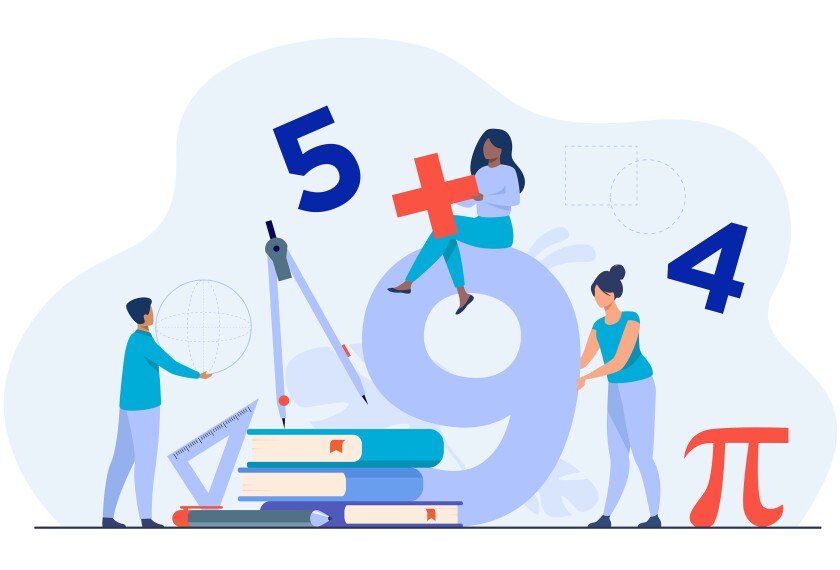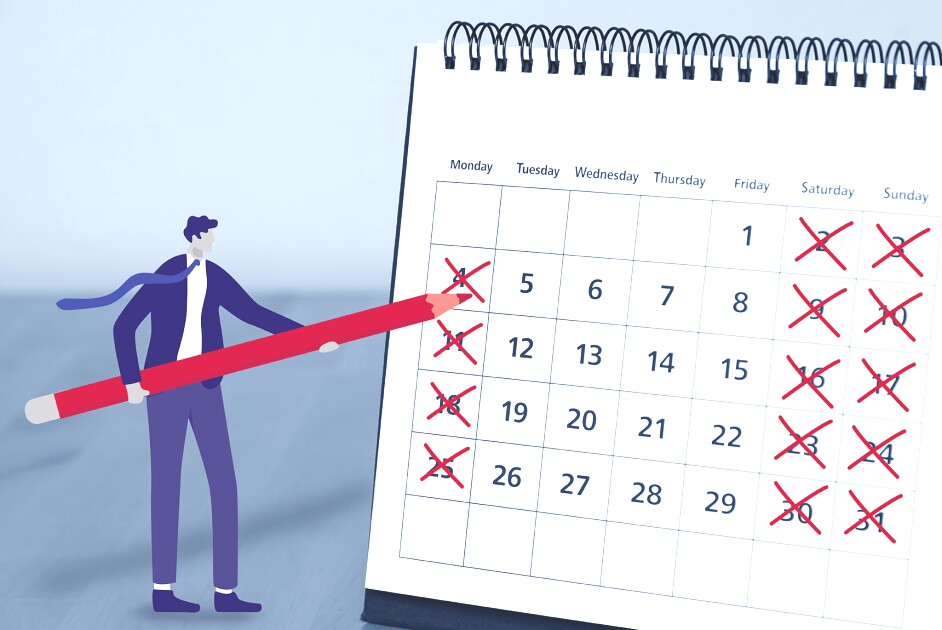Hannah Moulton teaches Algebra 1. But before her 9th graders get started on graphing linear functions or solving quadratic equations, she makes sure that they have a much more basic skill down pat.
Many of her students struggle with using negative numbers—a task they’ll need to master in order to complete the steps of many of the problems they will have to tackle in algebra, said Moulton, a math teacher at Hinsdale Central High School in Hinsdale, Ill.
“I do a ton of even elementary things with my Algebra 1 students, because I think it’s so important to have great number sense,” Moulton said. “I think that it’s very important that you master basic operations.”
This insistence on fluency with basic operations and math facts sets Moulton, and many K-12 teachers, apart from their math education counterparts in colleges and universities. It’s one of the several differences of opinion in ideas about best practices and philosophies of math education that surfaced in recent EdWeek Research Center surveys of both K-12 math teachers and postsecondary educators.
While 72 percent of teachers said fact fluency was essential for K-12 students, only 56 percent of postsecondary instructors said the same.
The surveys found some similarities between the groups, too. But the differences suggest that there’s a disconnect between math education theory and the practices that teachers actually use in the classroom.
As part of Education Week’s coverage of math instruction, the EdWeek Research Center conducted two nationally representative surveys in spring and summer 2023: one of 301 K-12 teachers who taught math some or all of the time and the other of 373 postsecondary math and math education instructors.
Our goal was to understand more about the training that shapes K-12 teachers’ work, and the practices that they actually use in the classroom. (The Bill & Melinda Gates Foundation provided financial support for the higher education survey. EdWeek designed the survey instrument and maintains sole control over articles informed by the results.)
The disconnect in the results requires deeper conversations in the field, said Michael Driskill, the chief operating officer of Math for America, a fellowship program for math and science teachers based in New York City.
“From my vantage point, the way we’ve often thought about it as a country is, ‘there must be something wrong with what the teachers are doing, and we need the university instructors to fix it in some way,’” he said. “But in my experience, it’s a lot more complicated than that.”
What does ‘productive struggle’ actually look like?
Among the similarities the surveys found was regular engagement in “productive struggle.”
Both classroom teachers and university and college instructors said they regularly employed the strategy—asking their students to grapple with the structure of problems and relationships among mathematical ideas, rather than simply seeking the correct answers, even if that causes students some discomfort.
Twenty percent of postsecondary instructors and 25 percent of K-12 teachers said they did this daily; 49 percent of postsecondary instructors and 45 percent of K-12 teachers said they did it weekly.
But these two groups of educators may have different ideas of what productive struggle looks like.
When college students enter their student teaching placements, they often hear from mentor teachers that the methods they learned in their education programs won’t actually work in the classroom, said Julie Booth, a professor in Temple University’s College of Education and Human Development. Such methods typically include “any practices that are considered more newfangled, and that are made for the kids to think and not do,” Booth said.
Teachers say that many of these practices can frustrate students to the point where they disengage.
Moulton, the algebra teacher, said that complex math tasks that ask students to draw on many different skills at once to come up with creative solutions can be overwhelming for some students. She gave an example: Imagine you have two timers, one that measures four minutes and one that measures seven minutes. How can you use both timers to measure nine minutes?
“When you walk into a room where they don’t like math, and they’ve hated it their entire lives, it’s hard to get them to persevere” on a problem like that, said Moulton. “I think you lose a good chunk of students within the first few minutes of presenting it.”
She does give students open-ended tasks, and she creates math review games for them to practice skills, but she aims for problems that more clearly focus on specific math concepts, where her students are more likely to have success.
In real-world classrooms, engaging students in the kind of open-ended tasks that math university educators promote presents a challenge, said Driskill: How do you help students tackle more complex problems if they don’t have mastery of the basics?
It’s possible to prepare future teachers to do this, he said, but it requires more attention from postsecondary instructors to the realities of K-12 classrooms. Practice should inform theory, too, he said: “Real classrooms are very complicated spaces.”
Differences in perspectives on classroom materials, grouping
These disconnects between theory and practice show up in other instructional choices, too.
Postsecondary math instructors are more likely to say that K-12 teachers should rely on curriculum materials that districts purchase or create, while teachers themselves tend to rely more heavily on materials that they’ve found, either for free or for purchase.
Previous research has shown that when teachers source their own materials, it’s often because they feel the resources their district has provided don’t engage students or differentiate for different needs.
K-12 teachers are also more likely to favor ability grouping, and recommend it earlier in students’ education, than postsecondary instructors.
Twenty-three percent of postsecondary instructors say schools should never group K-12 students, compared to 12 percent of teachers. Half of K-12 teachers in the survey thought that ability grouping should start in elementary school, compared to 20 percent of college and university instructors.
“It doesn’t surprise me that there’s a difference between what people are thinking in the field,” Driskill said. Teachers’ preference for earlier-age ability grouping could stem from uncertainty about how to deal with the reality of classrooms in which students come with vastly different levels of background knowledge, even early in their education, he said.
Such teachers might feel more comfortable working with homogeneous groups than trying to differentiate, said Booth.
Still, she emphasized the benefits of mixed ability grouping. It can help struggling students, who get to learn from peers—but it also benefits students who already have mastery of the material, because explaining how to do something can solidify their understanding, Booth said. “Everybody learns from that,” she added.
There’s always a “collision” between theory and the real world in classrooms, said Driskill. “I don’t see that as a deficiency of the teachers,” he said. “I see that as a missed opportunity to connect theory and practice in more meaningful ways.”

Data analysis for this article was provided by the EdWeek Research Center. Learn more about the center’s work.







